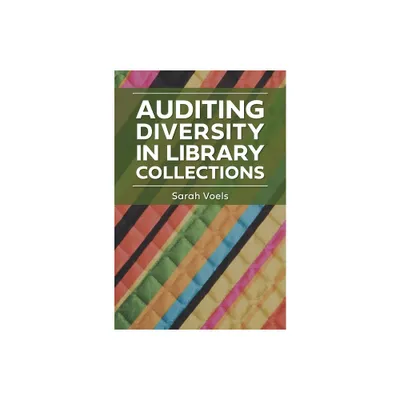Home
Auditing Diversity Library Collections
Loading Inventory...
Barnes and Noble
Auditing Diversity Library Collections
Current price: $60.00


Barnes and Noble
Auditing Diversity Library Collections
Current price: $60.00
Loading Inventory...
Size: Paperback
*Product Information may vary - to confirm product availability, pricing, and additional information please contact Barnes and Noble
After explaining the importance of diversity audits, this book offers a range of options for how to go about conducting them.
Library collections serve as a reflection of their communities and the wider world, and audits are the best way to assess the inclusivity of these collections. In this practical book, Sarah Voels helps libraries meet the challenge of doing a diversity audit.
The task of auditing a collection for its diversity is essential to the development of a reflective collection. Conducting a diversity audit gives library professionals a realistic and accurate assessment of the strengths and weaknesses of the materials they provide their readers. Only with this information at hand can libraries work toward improvement. But what's the best way to conduct an audit? What criteria should be used? How can audits be tailored to specific communities? How much will it cost, and how much time will it take?
Voels has taken away the guesswork by surveying a wide range of libraries that have performed diversity audits and sharing their successes and challenges. She suggests best practices while acknowledging that each library's specific situation will be unique. All libraries considering a diversity audit will benefit from this guide.
Library collections serve as a reflection of their communities and the wider world, and audits are the best way to assess the inclusivity of these collections. In this practical book, Sarah Voels helps libraries meet the challenge of doing a diversity audit.
The task of auditing a collection for its diversity is essential to the development of a reflective collection. Conducting a diversity audit gives library professionals a realistic and accurate assessment of the strengths and weaknesses of the materials they provide their readers. Only with this information at hand can libraries work toward improvement. But what's the best way to conduct an audit? What criteria should be used? How can audits be tailored to specific communities? How much will it cost, and how much time will it take?
Voels has taken away the guesswork by surveying a wide range of libraries that have performed diversity audits and sharing their successes and challenges. She suggests best practices while acknowledging that each library's specific situation will be unique. All libraries considering a diversity audit will benefit from this guide.


















